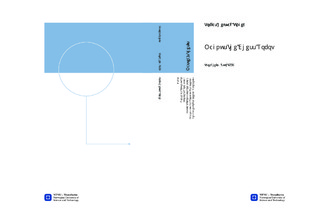| dc.description.abstract | The goal of this thesis was to create a low-cost chess-playing robot to help progress the field of small-scale robotics and make it more available for personal use. To achieve this, methods for moving pieces on a chessboard has been evaluated, resulting in the design of a four positional degrees-of-freedom elbow manipulator arm. Of-the-shelf servo motors were chosen as the arm s actuators, providing closed-loop control contained within each motor. Control of the motors was interfaced through a dedicated servo controller, consisting of both a microcontroller and interfacing software written in C++. An inverse kinematic based open-loop robot controller was made to control the overall movements of the arm and ensure that the arm avoided any potential obstacles in its workspace. To help the robotic arm with perceiving its surroundings, a wide selection of sensory configurations and computer vision algorithms were evaluated. The sensory unit was implemented by capturing images with a Microsoft LifeCam Studio camera and using OpenCV to process the captured images. The chess engine was not implemented as part of this thesis, therefore the work done on this part has mainly been to find a suitable chess engine and incorporating it into the implemented system.Based on the results obtained, a complete chess-playing robot was created. The robot performed with a relatively good accuracy and repeatability, but will require some improvements to increase the stability and smoothness of motion. The computer vision results exhibited a good degree of robustness, allowing the robotic arm to act fully autonomously. Some obstacles were not overcome, specifically the sensory unit did not provide the robot controller with the chessboard coordinates necessary to allow manipulation on chessboards of arbitrary size and orientation. The goal of proving the possibility of making small-scale robotics more available for personal use is believed to be achieved. With some further work on the chess robot, it is also believed that the robot could be useful for educational and entertainment purposes. | nb_NO |

